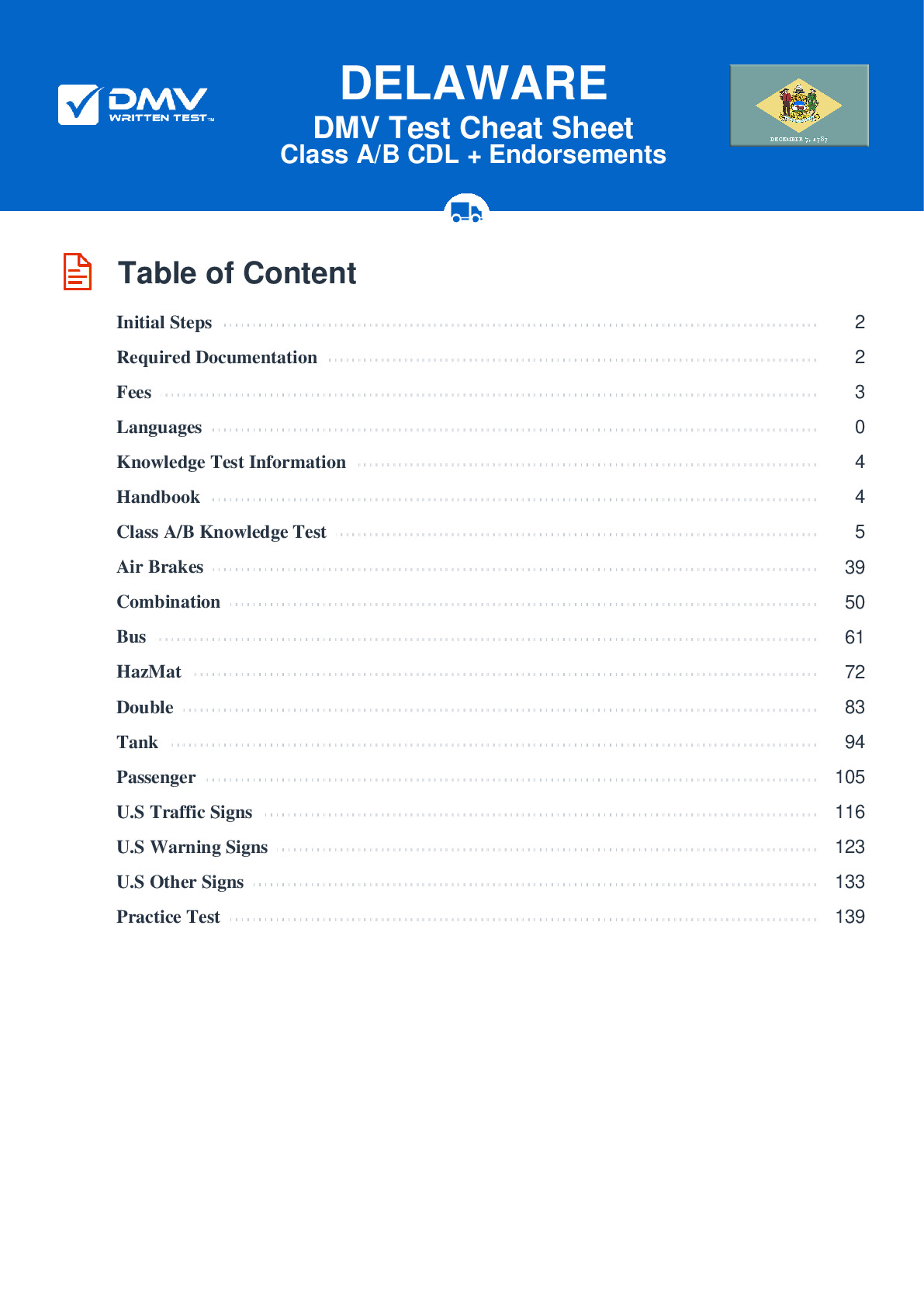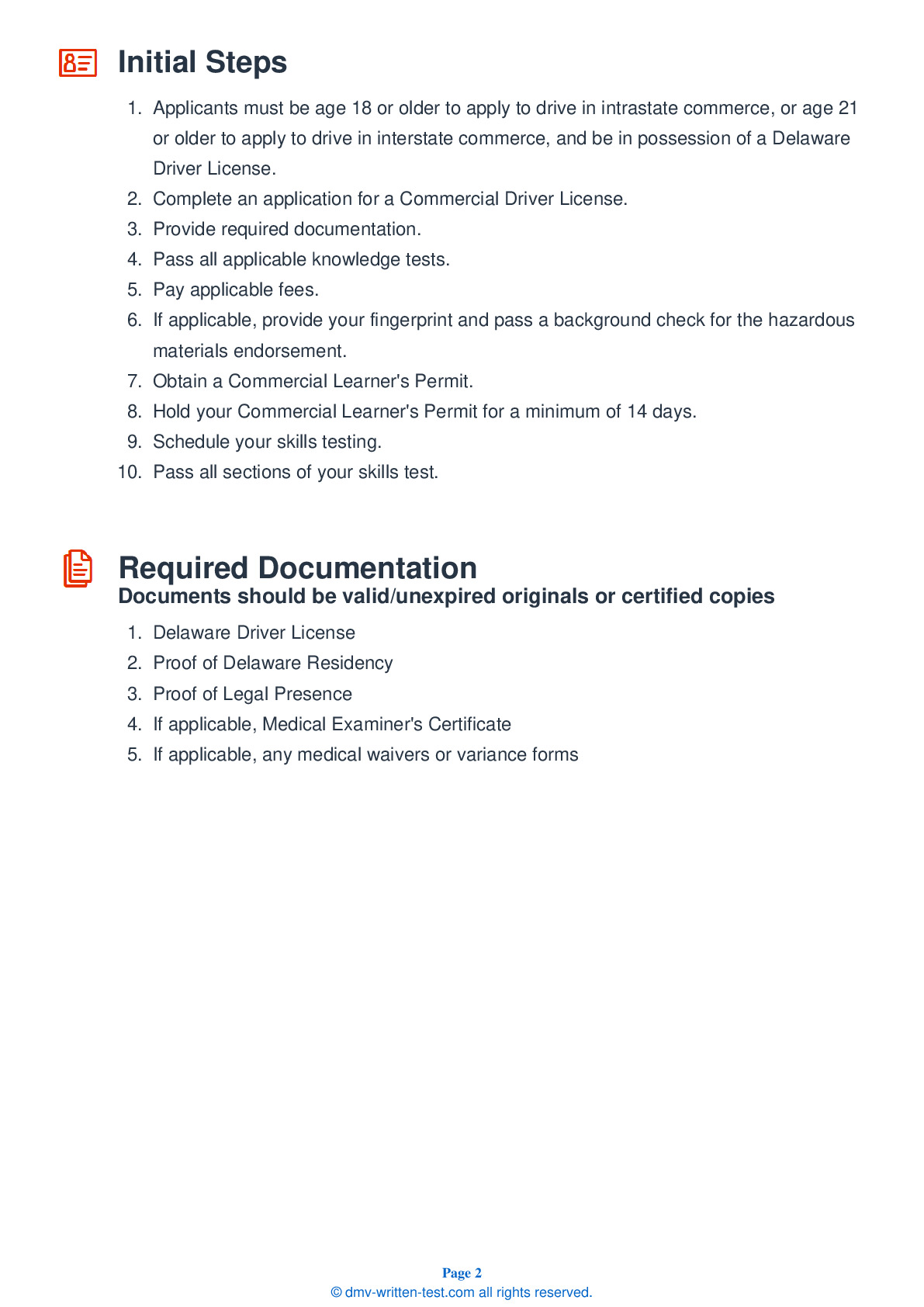Combination
All applicants who are applying for a Class A CDL should be prepared to take the Combination test. This test covers information found in Section 6 of the State of Delaware Commercial Driver License Manual. Section 6 provides the information needed to safely operate tractor-trailers, doubles, triples, and straight trucks with trailers. The test is made up of 20 multiple-choice questions, and applicants will need to correctly answer a minimum of 16 questions to pass. The Combination test is not a replacement for the Double/Triple endorsement test.
Number of Question
Passing Score
8. If you need to back your trailer but cannot back up in a straight path, you should:
Explanation
If you need to back your trailer but cannot back up in a straight path, you should back on a curved path toward the driver's side of the vehicle. This will permit you the best possible visibility while backing.
9. When driving a tractor-trailer equipped with ABS, you should:
Explanation
When driving a tractor-trailer combination equipped with an Anti-Lock Braking System (ABS), you should brake in the same manner that you would in a vehicle without ABS.
10. The trailer hand valve should:
Explanation
The trailer hand valve works the trailer brakes but should only be used when testing them. Using it while driving could create a skid. Never use the trailer hand valve while parking because doing so may release the air pressure from the braking system, releasing the brakes that are holding the vehicle in place.
11. To help prevent rollovers, you should:
Explanation
To lower the risk of a rollover, load your cargo as closely to the ground as possible. To further reduce this risk, take curves and corners slowly.
12. A trailer that is too high:
Explanation
Before coupling together a tractor and a trailer, you should make sure the trailer is at the proper height. If the trailer is too low, the trailer nose may be damaged. If the trailer is too high, it may not be able to couple correctly.
13. If a trailer begins to jackknife, the driver:
Explanation
If a trailer begins to jackknife, you should release the brakes and allow the trailer wheels to regain traction with the road. Do not apply the trailer hand brake to attempt to straighten out the rig because the application of brakes is what caused the wheels to lock in the first place.
14. How much space should be between the upper and lower fifth wheel?
Explanation




